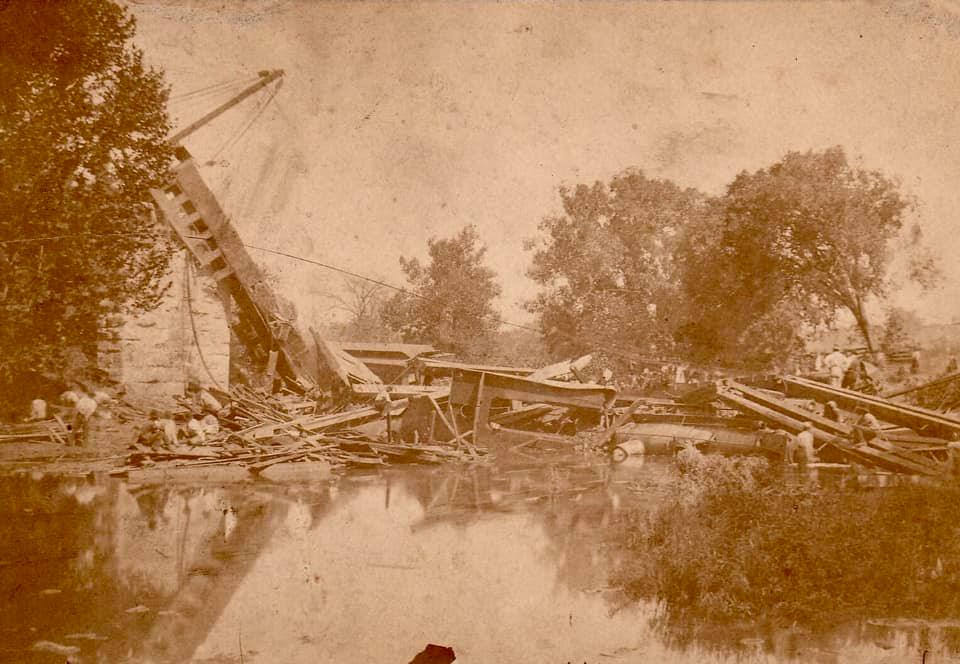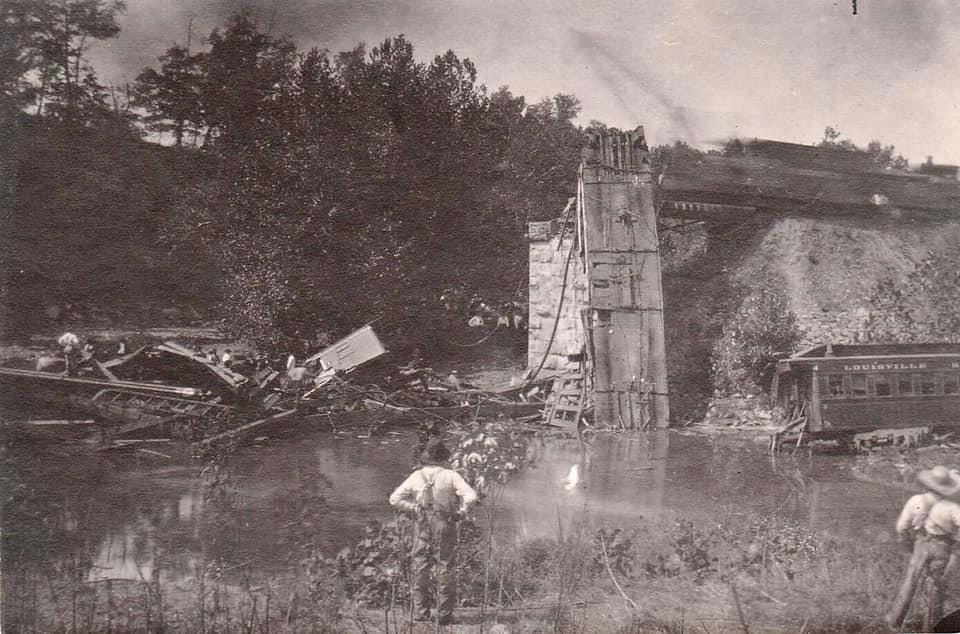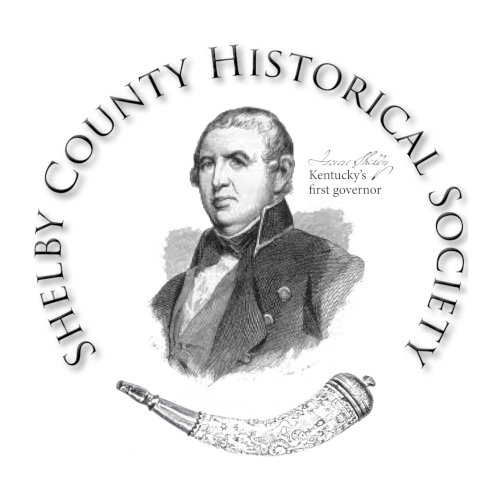

Railroad Disaster on Floyd’s Fork Bridge
September 8th, 1881
The train consisting of two coaches, a baggage car, and an engine departed Anchorage station an hour late. At approximately 8:00 p.m., only one hundred feet from the bridge, a cow walked onto the track and into the path of the oncoming train. Frank Honaker, the Engineer, immediately reversed the engine, but it was too late. The train struck the unfortunate bovine and rolled over the animal, causing the derailment. The train skidded along the railroad ties for about fifty feet and then struck the left side of the iron and timber bridge. The bridge collapsed before the engine reached the far side and locomotive, cars, and all plummeted thirty feet into the creek below.
Of the one hundred passengers aboard, seven were killed and around thirty people were seriously injured, mostly from Shelby County. Among the deceased were Fielding Neel, President of the railroad, and William E. Maddox, Town Marshal. Maddox was escorting an African American prisoner named, Henry Ford back to Shelbyville to face the charge of theft of a pocket watch and chain. While Maddox was killed instantly, the accused was left unharmed. Ford stayed at the scene and assisted rescue efforts, saving several women and children from drowning. The prosecution against him was dropped as a result of his heroism.

The Coroner’s Inquest was held three weeks later. Engineer, Frank Honaker was scrutinized relentlessly. Blind in one eye, he had only been in charge of the train for two days, as his father was the primary Engineer, but had taken a leave of absence. Some said the train was moving at a high rate of speed to make up time, and some said the headlamp was not lit. Others rebuked the railroad for not outfitting the engine with air brakes. Everyone wanted someone to blame, and, in the end, the jury found, “The deaths were caused by carelessness on the part of the railroad company and their employees.”
